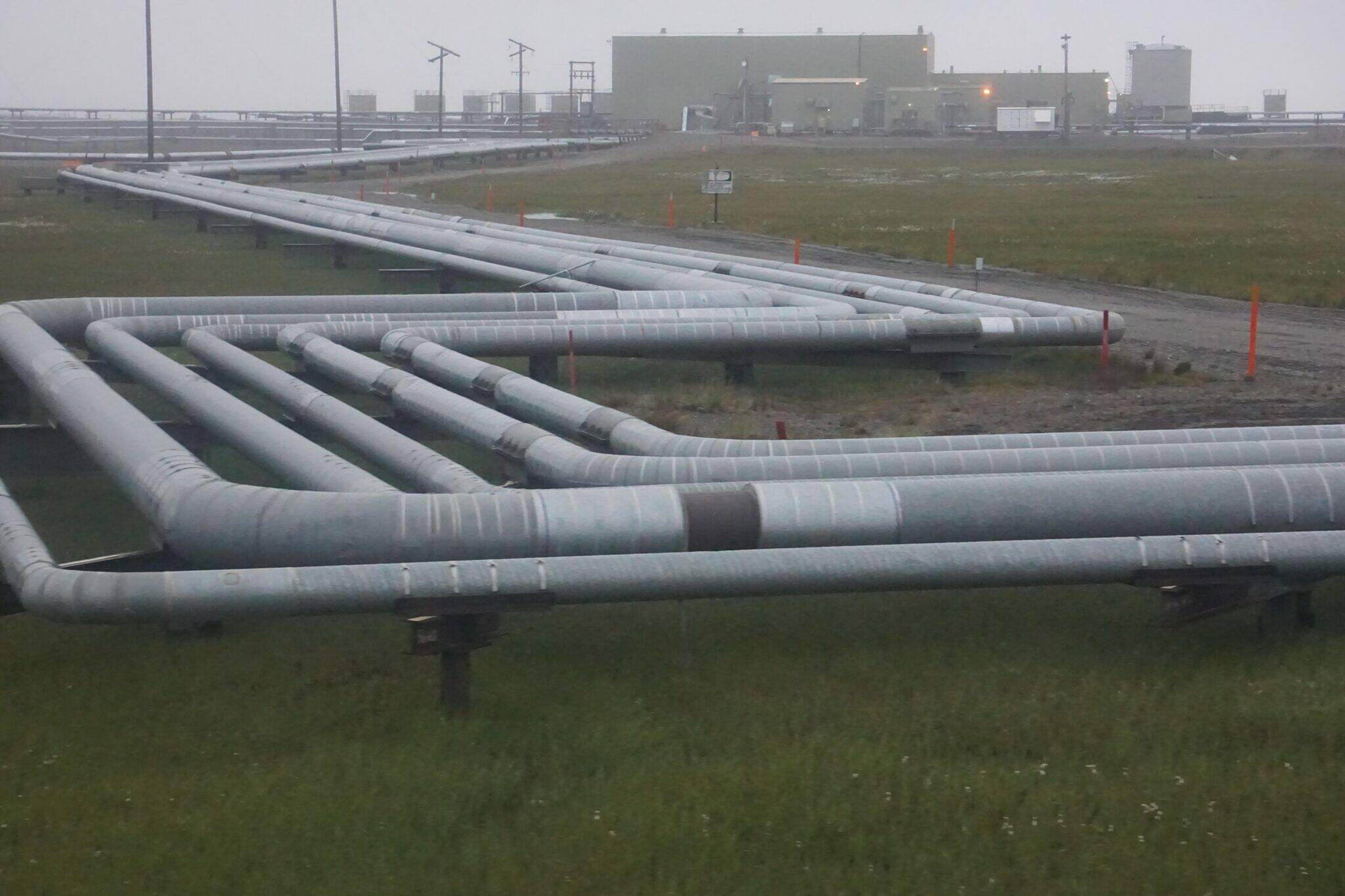The oil industry packs a bigger economic punch than any other industry in Alaska, according to study findings presented on Wednesday at an industry conference in Anchorage.
The study, by the McKinley Research Group and commissioned by the Alaska Oil and Gas Association, found that oil and gas employment, spending, tax revenues and spinoff effects supported 16% of the state’s jobs in 2022.
For each direct oil and gas company job, industry activity supported 15 other jobs, and each dollar in oil and gas industry wages supported $4 in other Alaska wages, according to the report, which was presented at the Alaska Oil and Gas Association’s annual conference.
“This is a significant multiplier. This is the highest multiplier in the state,” Katie Berry, McKinley’s director of economics and research, said in her presentation at the conference. “And that comes about because the oil and gas industry has such a high level of spending and is so connected to their vendors and is so connected to the state of Alaska.”
The multiplier to which Berry referred is an economic term that accounts for direct employment and spending, indirect spending and induced spending, which includes industry workers’ purchases in the larger economy.
“Every time somebody that works at an oil and gas company goes to the dentist or pays for child care or stops by Costco, they’re supporting jobs and wages here in Alaska,” Berry said.
The 15 primary oil and gas companies operating in the state employed 4,105 workers, 83% of whom were Alaska residents, and paid $1.1 billion in wages in 2022, Berry said in her presentation. The companies that year paid $4.6 billion for goods and services in Alaska and contributed $4.5 billion in total tax and royalty payments, $4.1 billion of which went to the state government, she said.
That $4.1 billion amounted to 47% of state revenue in the 12 months that ended on June 30, 2022, she said.
Factoring in all multipliers, the industry supported 69,250 jobs and was the source of $5.9 billion in wages in 2022, Berry said.
The industry’s big economic impact will continue in coming years, Berry said in her presentation.
The oil and gas companies collectively plan to spend $14 billion on new fields and investments in existing fields through 2028, a notable sum, she said.
“We feel compelled to remind you that these companies are operating in a global environment in which they’re competing to bring capital to the projects in Alaska. So to have this level of investment in the state is very significant,” she said.
Direct construction and drilling employment from that investment is expected to total 1,600 jobs with $1 billion in wages, Berry said. Factoring in the multiplier effect, the investment is expected to support 2,500 to 2,900 workers annually during the construction phase, she said.
Direct employment during the production phase of those new projects is expected to total 300 jobs and $65 million in wages by 2028, according to the findings. With all multiplier factors considered, the cumulative total from the new development during the production phase is expected to be about 2,700 new jobs and $215 million in wages through 2028, according to the findings.
The study is based on state and company data, Bery said.
The new findings were largely similar to findings in a McKinley Research report released in early 2020 that was also commissioned by the Alaska Oil and Gas Association findings. At the time, the company went by a different name: the McDowell Group.
That 2020 study, which focused on impacts in 2018, found a somewhat higher level of direct oil and gas company employment: 4,906, of which 84% were Alaska residents. Including all multipliers, the oil and gas industry supported 77,600 jobs in Alaska in 2018, about a quarter of all wage and salary jobs in the state, according to that study.
The Alaska Department of Labor and Workforce Development’s annual employment forecast, issued in January, noted that North Slope oil employment hit a 16-year low in 2021 but is poised to increase this year because of investments in new projects.
• Yereth Rosen came to Alaska in 1987 to work for the Anchorage Times. She has reported for Reuters, for the Alaska Dispatch News, for Arctic Today and for other organizations. She covers environmental issues, energy, climate change, natural resources, economic and business news, health, science and Arctic concerns. This story originally appeared at alaskabeacon.com. Alaska Beacon, an affiliate of States Newsroom, is an independent, nonpartisan news organization focused on connecting Alaskans to their state government.

